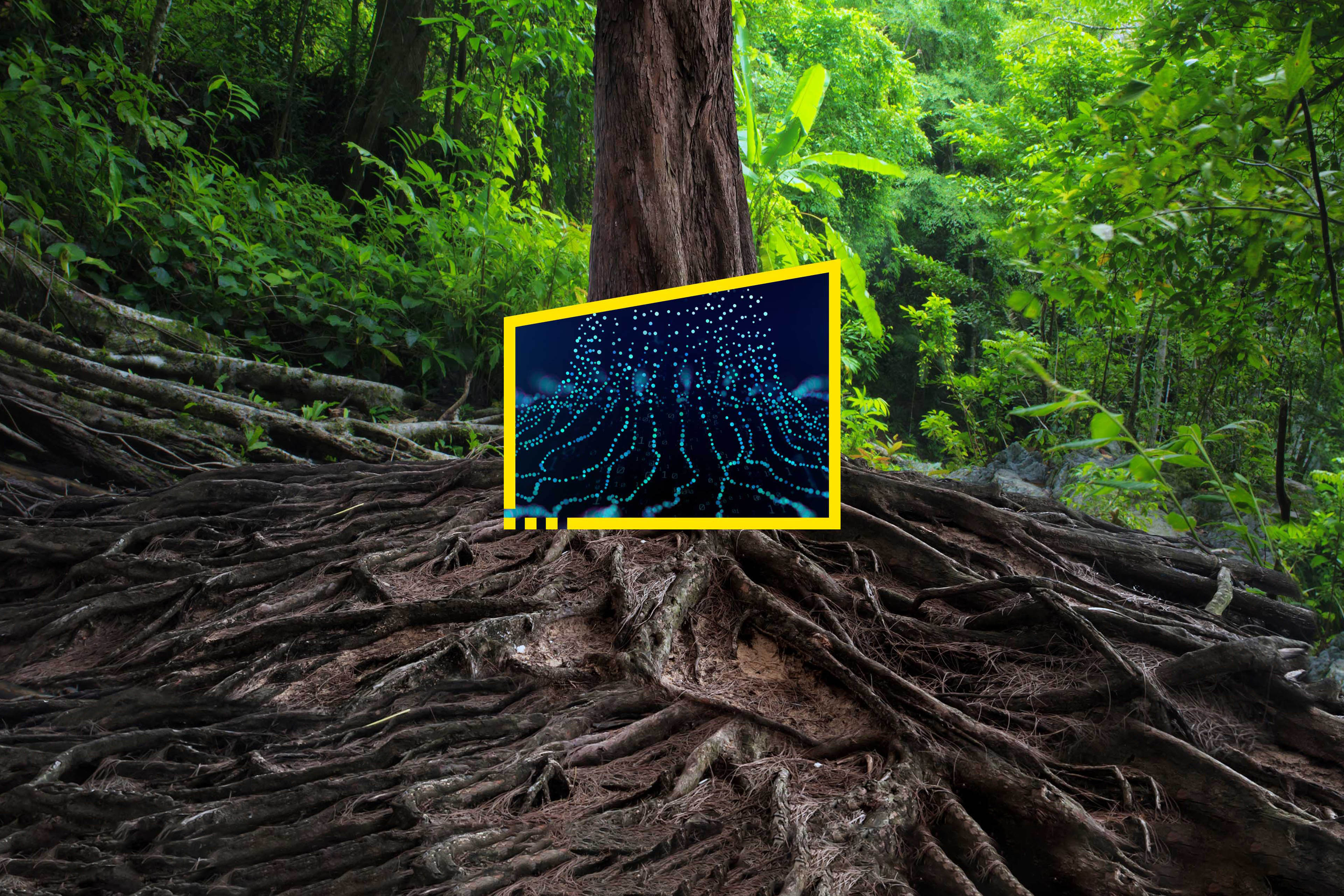EY refers to the global organization, and may refer to one or more, of the member firms of Ernst & Young Global Limited, each of which is a separate legal entity. Ernst & Young Global Limited, a UK company limited by guarantee, does not provide services to clients.

Businesses should act now to measure and mitigate their impact on biodiversity.
In brief
- Capital could be diverted away from businesses that deplete natural resources or cause adverse biodiversity impacts.
- Managing biodiversity risk can improve productivity and resilience, and underpin a social license to operate.
- Businesses should act now to understand their biodiversity risks and opportunities, build internal accountability and disclose their actions.
The impact of biodiversity loss can be extensive and often unrealized, causing disruption to supply chains, increasing regulatory compliance costs and potentially eroding social license. However, many companies have only just begun to explore their impact on biodiversity loss and only a small number of pioneering companies have published credible biodiversity strategies with robust biodiversity goals aligned to the Science-Based Targets Network.
Investors are also increasingly considering how to address biodiversity as part of their assessments and how they direct capital toward companies that can demonstrate and report on their biodiversity strategy. Alongside this, the Taskforce on Nature-related Financial Disclosures (TNFD) has recently launched the beta version of the TNFD framework, which is designed to help businesses understand their biodiversity risks and opportunities, and how to disclose their performance. This is expected to catalyze investor action in a similar way to the Task Force on Climate-Related Disclosures (TCFD).
What are biodiversity and natural capital?
Biodiversity
Biodiversity is the variability among living organisms from all sources, including terrestrial, marine and other aquatic ecosystems, and the ecological complexes of which they are a part. This includes variation in genetic, phenotypic, phylogenetic and functional attributes, as well as changes in abundance and distribution over time and space within and among species, biological communities and ecosystems.1
Natural capital
Natural capital is the world’s stocks of natural assets, which include geology, soil, air, water and all living things.2
It could easily be assumed that biodiversity risks are confined to heavily impacted sectors such as mining, forestry and agriculture. In these industries, unsustainable business practices can lead to environmental degradation, supply-chain disruptions, fluctuating prices, smaller crop yields from overused land and a loss of pollinators.
However, many companies likely rely on natural capital and this can impact them in some way. Therefore, business should consider including biodiversity and natural capital into their mainstream risk register.
Chapter 1
Investors are moving to redirect capital
Businesses causing adverse biodiversity impact could find it harder to access capital.
As with climate change, it is likely that investors will act to get ahead of the regulatory curve to provide confidence that they are not exposed to stranded assets created by progressive biodiversity regulations. The difference is that, while it was a couple of decades before companies and markets took climate change risk seriously, the imperative to understand and mitigate against biodiversity risk could race ahead on an accelerated track. Soon, capital could be diverted away from businesses that directly and indirectly cause adverse biodiversity impacts and into those that are “nature-positive.”
A variety of new regulatory approaches are also anticipated, including strict rules on the commercial use of specific land areas, subsidy reforms, taxes and fines, implementation of science-based targets and trade directives. Many countries and regions, especially in Europe, have already started this journey.
Regulatory levers around the world
- France has had a law on reclaiming biodiversity, nature and landscapes in place since 2016. The law aims to achieve a zero biodiversity net loss and led to the creation of the French Agency for Biodiversity. France has also established a duty-of-care law that requires companies to include environmental assessments on their supply chains.
- The European Parliament has a number of nature directives and has approved an outline proposal for the EU Directive on mandatory human rights, environmental and good governance due diligence, which is expected to be approved in 2022.
- Indonesia has introduced a moratorium on peatland conversion by restricting the issuing of new agricultural licenses.
- Costa Rica has redirected cattle subsidies toward paying farmers and landowners to provide ecosystem services such as carbon sequestration and watershed protection.
- Australia is assessing its Environment Protection and Biodiversity Conservation Act, with 38 recommendations expected to be implemented over a two-year period.
Chapter 2
How biodiversity could affect your business
Ecosystem collapse could cause significant operational risks.
According to the World Economic Forum (WEF), more than half of the global gross domestic product depends on nature.3 The United Nations Environment Programme Finance Initiative found that 13 of the 18 sectors that comprise the FTSE 100 — representing US$1.6t in market capitalization – are associated with production processes with high or very high material dependence on nature.4
This means one in five companies could face significant operational risks as a result of collapsing ecosystems.5 These material nature risks can typically be linked to the following:
- Dependency — When a business is directly dependent on nature (i.e., for fresh water, pollination or productive soils) as a part of its business model, it could impact its financial performance. For example, beverage companies should have a reliable supply of fresh water, food companies rely on the stability of crops and arable land, and biopharma companies rely on ecosystems to derive novel sources of medicines.
- Impact — Where business activities are either directly or indirectly negatively impacting nature, this in turn can impact the business through reputational damage, legal action or financial losses. Increasingly, employees, consumers, investors, policymakers and communities are expecting companies to manage their biodiversity impact to preserve their social license to operate.
Chapter 3
Similarities between biodiversity and climate change risks
Biodiversity and climate change can both be considered in terms of physical and transition risks.
Biodiversity and climate are strongly intertwined. Forests and ecosystems, such as mangroves, marshes and coral reefs, can be carbon sinks, contributing to the mitigation of greenhouse gas emissions, but they can also be important nature-based solutions that can help adapt to the effects of climate change, e.g., protection against coastal erosion and prevention of flooding. Biodiversity, like climate, is not the same in different areas or locations, and one important aspect of the TNFD framework will be the identification of priority locations based on where organizations interface, with ecosystems assessed as being in a high or extreme level of stress. We tend to think of biodiversity in terms of pristine rainforests, but it is just as important a consideration in urban landscapes.
Biodiversity risks share a number of common characteristics with climate change. Both are far-reaching in terms of breadth and magnitude, and contain tipping points beyond which it may be impossible to recover. They are both uncertain yet also foreseeable, with an impact that could be determined by short-term actions.
At a high level, risks in relation to biodiversity can be calculated in a similar way as those for climate change. These risks can be identified in the following ways:
1. Physical risks
These are damage to physical assets or the loss of ecosystem services necessary for production processes. Examples include local and regional financial losses in the agricultural sector from reduced pollination from insects (between US$235b and US$577b of annual global food production relies on pollinators6), and global financial losses in the medicine and technology sectors from reduced genetic biodiversity inhibiting research and development.
2. Transition risks
These include policy changes, legal developments and technology changes. With several stakeholders calling for the UN’s Convention of Biological Diversity (CBD) to announce the adoption of a global nature net-positive goal by 2030 and the full recovery of nature by 20507 at CBD COP15 in 2022, these risks are increasingly likely to materialize. The latest draft goals,8 released in July 2021, are consistent with this anticipated direction of travel, suggesting that such risks may emerge, with businesses that currently have a negative impact on nature most likely to be affected.
3. Disruption risks
These are risks where the loss or impact on nature disrupts societies or markets, such as the encroachment on natural habitats leading to the outbreak of a zoonotic disease.
Chapter 4
The difference between biodiversity and climate change risks
Biodiversity has become more of a financial risk for companies.
Climate change is more mature and understood as a business risk. Previously, climate change was viewed as an environmental externality, but this has shifted over the past decade to an environmental risk, and now a financial one. Biodiversity is arguably a fair way behind climate change on this curve.
Partly as a result of this immaturity, despite its similarities with climate change risk, understanding and managing biodiversity risk is different.
No single metric
While it is relatively simple for companies to calculate carbon emissions, measuring biodiversity can be complex and multi-faceted. There are two elements:
- The ways to assess the biodiversity value of ecosystems by measuring the number of endangered species or other appropriate metrics.
- Use this assessment to measure your impact of activities on biodiversity, such as the volume of pollinators to agriculture or ongoing clean river flows. These can be measured at different levels, such as corporate, site and project levels.
The TNFD framework should help businesses understand their biodiversity risks and opportunities, and how to disclose their performance. This could help shift global financial flows to nature-positive outcomes. While parallels with the TCFD are appropriate, organizations shouldn’t immediately expect the same level of guidance and precision in the tools that will be provided. A full market release of the framework is expected in the second half of 2023.
Offsets are not “like for like”
Offsets cannot make up for the loss of destroying ancient ecosystems containing rare species. Some biodiversity will always be lost in offset exchanges as no two areas of habitat or species populations are identical. Also, making biodiversity offsets meaningful can involve a long-term commitment to take full account of direct, indirect and cumulative impacts, geographically and over time. When it comes to managing biodiversity risk, priority should be given to avoiding and reducing the impact on biodiversity loss, and offsets should be considered as a last resort.
The need to take into account multiple values
Landscapes should be managed for productive, wilderness and cultural values. Protecting biodiversity doesn’t have to involve locking up land as wilderness. We can look into the deep knowledge of indigenous people to understand how these values can coexist.
The skill set
Biodiversity is an enormous multidisciplinary area, requiring companies to engage with a new type of capability – usually outside their comfort zone. Many of the conservationists brought on board by corporates today are former activists from the “other side.” This requires emotional maturity to overcome historical hostility and recognize that corporates and activists will have to work together to protect biodiversity. Non-Governmental Organizations (NGOs) and philanthropists typically work where there is market failure. Businesses should work with these stakeholders to understand the nature of the failure, so that they can help avoid introducing distortions as markets are developed.
To this final point, business should accept that there are only a few simple and straight-forward answers. For example, in agriculture, pesticides cannot just stop being used, if that could mean humans will starve. Instead, the industry should be encouraged to farm in a more biodiversity-supporting way — not just on hobby farms, but across big agriculture – replacing monoculture with polyculture farming practices. This will likely require collaboration from diverse stakeholders on an unprecedented level. Companies should welcome former adversaries into their boardrooms and earn their trust. Activists should avoid discrediting corporates and become part of the solution.
Chapter 5
The benefits of getting biodiversity right
Biodiversity considerations can also have other positive impacts.
While biodiversity considerations can seem arduous, they can lead to better outcomes and help make the value chain more resilient. For example, with careful planning and management of a greenfield residential property development, the work done to avoid the risks of fragmented landscapes and keep biodiversity systems intact can also help improve property valuations. As a simple example, a higher tree cover can help reduce urban heat and combat some of the physical effects of climate change.
In a similar example, a chemical company, valuing the river its operations depend on, can take that value into account in capital decisions — with benefits flowing to multiple stakeholders. Investing in the biodiversity of the areas surrounding the river can provide confidence that the water is of the required quality and quantity the company needs to sustain and grow its operations. But this same action can also lift the quality of life in local communities, help farms be more productive and enrich local ecosystems.
Biodiversity impact exists beyond rural areas in towns and cities. There are important roles for local governments, town planners and developers to incorporate nature-related opportunities into their strategic planning, risk management and asset allocation decisions.
Chapter 6
Next steps towards managing biodiversity risk
Companies should act now to help reduce the negative impact of biodiversity.
As the world transitions to a low-carbon economy, companies could be increasingly expected to demonstrate not just their decarbonization strategies, but also how they are reducing negative impacts on (and ideally enhancing) biodiversity.
This is likely to include disclosing how they have adopted or plan to incorporate business practices consistent with the sustainable use and management of natural capital, including air, water, land, minerals and forests. Just as companies are striving to embed a carbon price in decision-making, they should also create formal natural capital accounts to support innovation, conservation and planning for environmental shocks. To investors, aggregate diverse natural resource data is expected to soon be just as important as environmental, social and economic data.
Organizations should not wait for globally agreed frameworks or perfect tools to be available. They should work with their suppliers now to act on biodiversity across their value chain and help mitigate their impact.
To get started, companies should:
1. Educate and enlist
Familiarize the C-suite with biodiversity concepts, tools and frameworks, and get your organization involved in biodiversity think tanks and initiatives, such as the TNFD or the Science-Based Targets Network or local organizations.
2. Enroll and enforce
Bring in new skills and technologies to help map biodiversity risks throughout your value chain and reduce their impact, while setting science-based targets and building internal accountability for biodiversity across your business, by aligning with standardized frameworks – e.g., the TNFD and SBTi.
3. Embed and explain
Develop a common strategy that tackles both climate and biodiversity challenges and incorporate into your climate strategy, then consistently disclose how you are identifying, measuring and managing biodiversity risk and opportunities.
Summary
Biodiversity loss can directly impact businesses by disrupting their supply chains, increasing regulatory compliance costs and eroding social license. Investors are already considering how to address biodiversity as part of their assessments and how to direct capital toward companies that can better demonstrate a nature-positive strategy, underpinned by robust, science-based targets. Businesses should be ready to respond.
How EY can help
-
EY teams can help address ESG and sustainability issues, investor concerns and improve ESG performance. Find out how.
Read more
Related article
Is your ESG data unlocking long-term value?
Better environmental, social and governance (ESG) insight and data analytics could be critical to delivering long-term value. Find out more.
The CFO Imperative: How can corporate reporting connect your business to its true value?
Reboot reporting and the finance operating model to meet demands for transparency and insight into financial and nonfinancial performance. Find out more.





